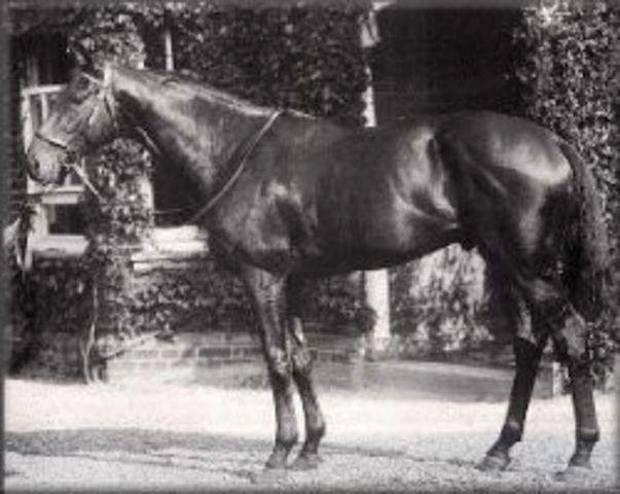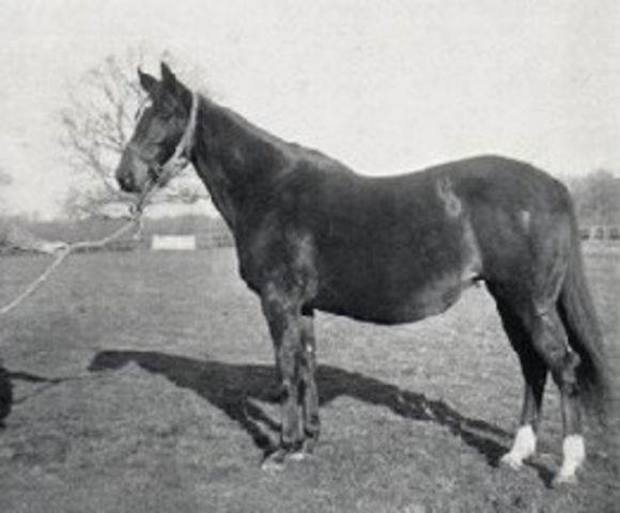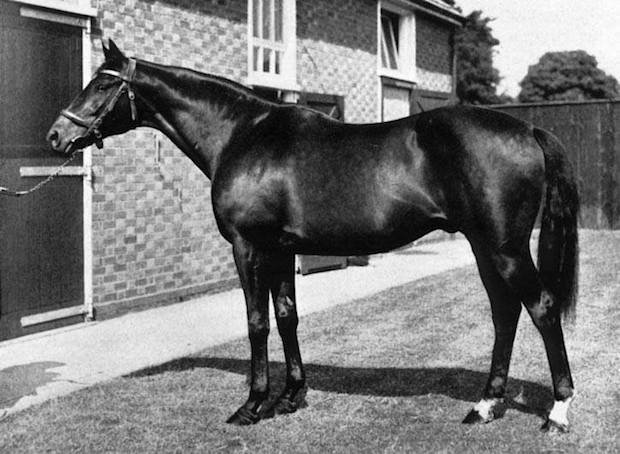BY DENNY EMERSON — If you ride a thoroughbred in 2015, anywhere on planet earth, you do so because back in 1934 an Englishman had a prejudiced attitude toward Italians.
WHAT?
Yup.
In 1934, an Italian horseman named Federico Tesio had a mare, Nogara, that he wanted to breed to Lord Derby’s champion race horse, Fairway.
But Lord Derby’s stud manager, the person responsible for accepting mares into Fairway’s book, was prejudiced against Italians, and refused Tesio’s request.

Tesio bred Nogara to Pharos, the full brother of Fairway, when he was declined a breeding to Fairway.
So Tesio bred Nogara to Pharos, the full brother of Fairway.
The resulting foal was Nearco, a great champion on the racetrack, but an even greater sire of sires.
Nearco sired many foals, but the reason virtually all modern thoroughbreds descend from him is because he sired the three stallions— Nasrullah, Nearctic and Royal Charger.
Nasrullah sired Bold Ruler, Nashua and Never Bend, plus many others.
Nearctic sired Northern Dancer—’nuff said.
Royal Charger sired Turn To, Turn To sired Hail To Reason.
Have a look at your thoroughbred’s extended pedigree. Chances are you will find all three of Nearco’s sons back there. Almost certainly, you will find one of them.
And, had that stud groom not been prejudiced, Nearco would have never been foaled, nor would any horse descended from him.
And THAT is “the rest of the story.”
About the author:
Named “One of the 50 most influential horsemen of the Twentieth Century” by The Chronicle of the Horse, Denny Emerson was elected to the USEA Hall of Fame in 2005. He is the only rider to have ever won both a gold medal in eventing and a Tevis Buckle in endurance. He is a graduate of Dartmouth College and author of How Good Riders Get Good, and continues to ride and train from his Tamarack Hill Farm in Vermont and Southern Pines, NC.
* This article was reprinted with permission of Denny Emerson and the Horse Collaborative.




Responding specifically to Karen, the third stallion she was trying to remember is actually the most common by far of the foundation horses, the Darley Arabian. However, there are many other stallions in pedigrees, just not on the top (sire) line.
Personally, I think the problems are varied. Part of it is certainly early racing. Back around 1800, horses weren’t raced until age 5. The races were longer, which means the horses were running more slowly. They also didn’t have drugs like butazolidin or lasix, which is used on virtually every horse running today.
Of all those factors, I think drugs are the biggest problem. If they could be exorcised from horse racing, you’d see a big improvement in durability.
And therein lies the problem with today’s thoroughbred. They are dangerously inbred, almost to the point of incest.
The breed descends from 3 main studs. The Godolphin Arabian, Bylerly Turk, and another Barb I can’t remember the name he was called by. By the time Nearco was born, bad, recessive genes were coming to be dominant. No longer was the body slim, but bulked up with muscle. This makes thoroughbreds heavier, and unfortunately, their legs are no stronger than they were in the 1700’s. This is a big reason why so many break down, or develope arthritis at an early age.
Another reason, of course, is that before they are fully grown, they are trained to race, which only exacerbates the problems.
Northern Dancer had weak ankles, and unfortunately passed that trait on. Many of his descendants have the same problem. They suffer broken lower leg bones, often resulting in catestrophic breakdowns on the track, or chronic joint problems, like arthritis, by age 3. Horses should not develop arthritis until age 20 or older.
The products of Nogara over five generations
http://www.galopp-sieger.de/galoppsieger/stammtafel_html?startPferd=NogaraHavresac&fart=&ftype=&tiefe=5&suchePferd=nogar&efil=
Nasrullah was one of my favorite sites to find in any bloodline of a horse I might own. Back in the 1960’s and 1970’s I also noticed a lot of wonderful jumpers back then also had Nasrullah in their bloodlines. It is ALWAYS fascinating to read about twists of fate that lead to the breeding of a successful horse that would never have been foaled if someone had not done something to change original breeding plans. I thoroughly enjoyed this article
…goosebumps…
I love these types of stories! Well done! CD
I’m not a horse person, just an animal lover/activist — I sign petitions and donate when I can. But I so enjoy the newsletters and stories Off track Thoroughbreds sends. It’s so heartening to see how many people deeply care and are so loyal to these glorious animals.